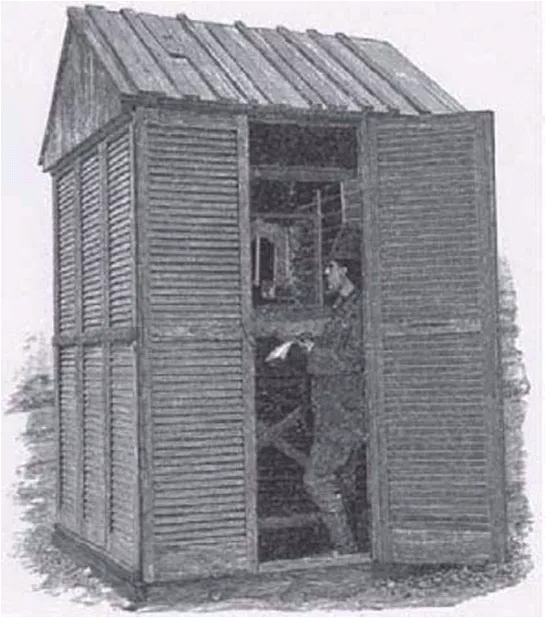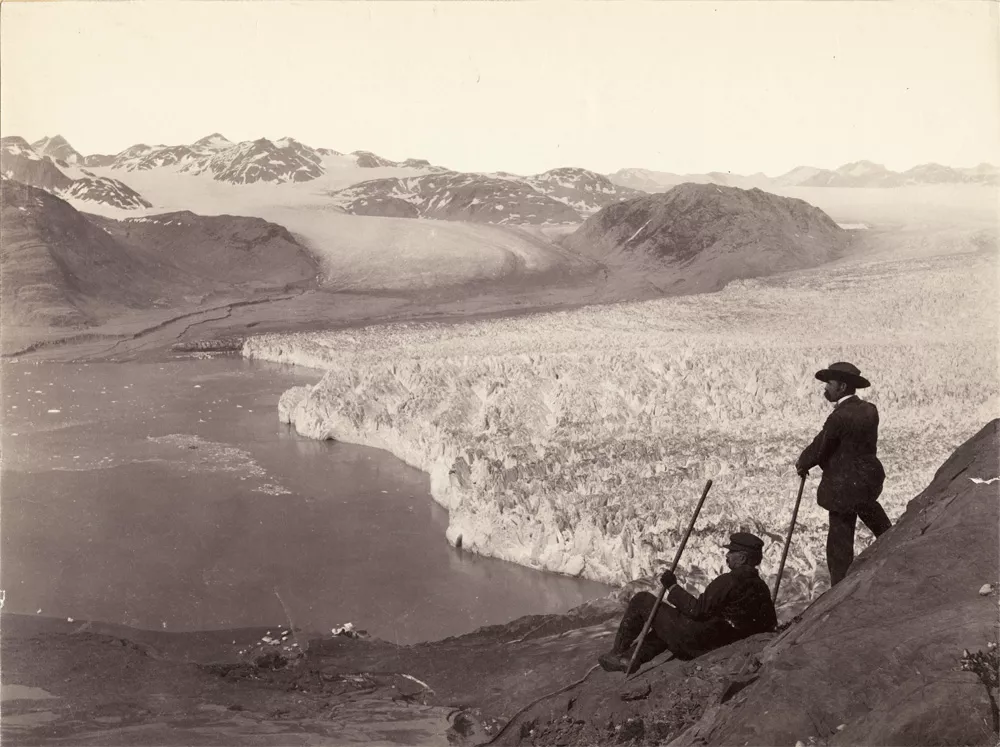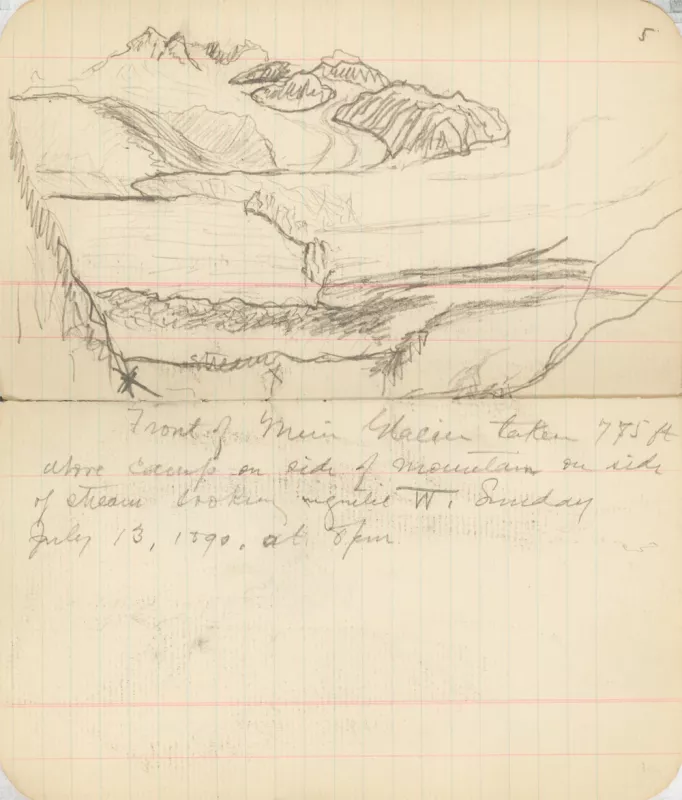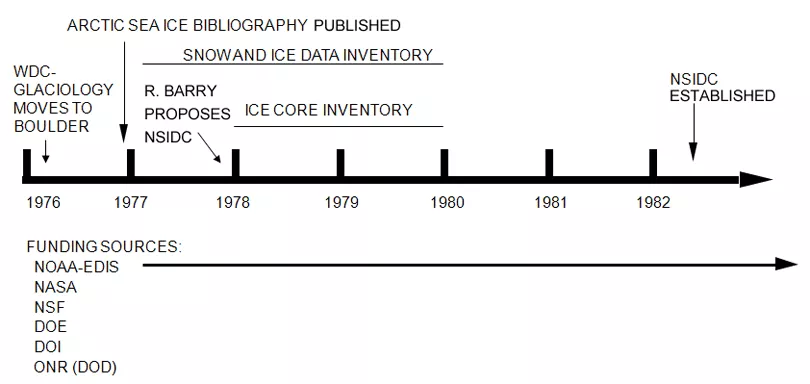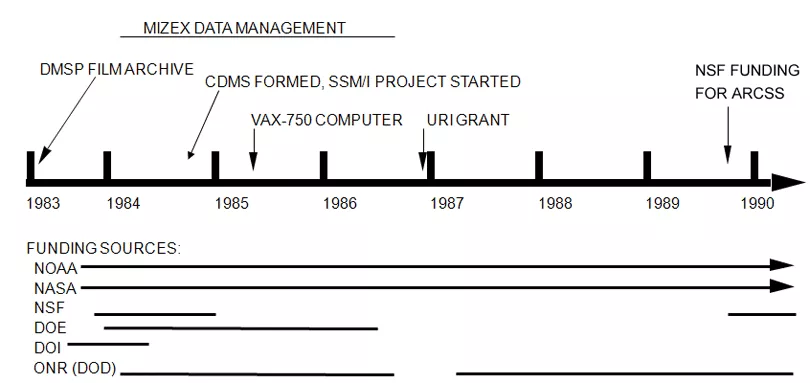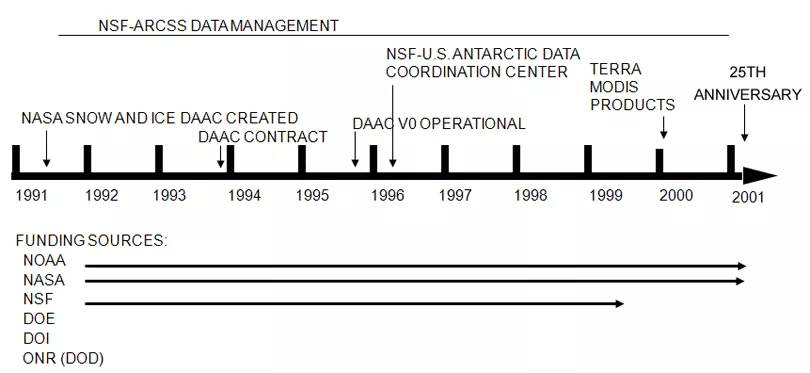The National Snow and Ice Data Center (NSIDC) had humble beginnings when the World Data Center (WDC) for Glaciology moved to Boulder, Colorado in 1976. The director of the WDC for Glaciology at the time, Professor Roger Barry, saw a need for a data center dedicated to the archiving of all snow and ice data and suggested that such a data center be created. In 1982, NOAA officially established NSIDC.
To fully understand the creation of NSIDC, a brief overview of the events that lead to the creation of the WDC is necessary. Glaciologists have been going on expeditions and photographing glaciers since the invention of the camera. The first International Polar Year (IPY) 1881-1884 created a wealth of data. One expedition, led by Lieutenant Adolphus Greely, to Lady Franklin Bay off the northeastern shore of Ellesmere Island, endured immense hardship, sacrifice, and even death all to preserve data they had so laboriously obtained.
"Greely was aware that if a relief steamer did not arrive after their second winter they would be forced to retreat to safety on their own. He made condensed copies of their scientific records (amounting to some 500 observations per day for two years), and when they abandoned Fort Conger in August 1883 they took with them—in lieu of extra rations—these copies sealed in three tin boxes weighing 50 pounds each...The scientific records were the only meaningful legacy of their effort. If they were lost, all of their hardships would have been for nothing" (Wood 2006). Of the 24 men that started the expedition, only six, including Greely, survived. They realized the need to preserve their work for use by other scientists in the future, and other scientists have also had this same realization.
As a young glaciologist, William O. Field, realized the need for a place to house historical photographs and notebooks like those from the Greely expedition and those in the images at left. In 1932, Field started a collection with $100 left over from one of his earlier expeditions (Field 2004).
Initially, the collection was housed in the office of another glaciologists at the Library of Congress. Field found different funding through the years for the collection, finally bringing it to the American Geophysical Society (AGS) in 1945 where he worked at the time. A huge step for the data center occurred in 1957, during the first International Geophysical Year (IGY), when the U.S. National Committee for the IGY awarded the operation of WDC-A for Glaciology to the AGS under director Dr. William O. Field. The WDCs were formed to handle the unprecedented data of IGY. The WDC-A for Glaciology was a data center responsible for archiving all available glaciological information at the time. In 1970, it was moved to Tacoma, Washington where it was operated by the U.S. Geological Survey, Glaciology Project Office, under the direction of Dr. Mark F. Meier until 1976.
In 1976, responsibility for the WDC for Glaciology was transferred to the NOAA Environmental Data and Information Service (EDIS); and the center moved to the University of Colorado in Boulder, Colorado under the direction of Professor Roger G. Barry. In 1982, NOAA created the National Snow and Ice Data Center (NSIDC) as a means to expand the WDC holdings and as a place to archive data from other NOAA programs. In the 1980s and 1990s, support to NSIDC widened with NASA funding for the Snow and Ice Distributed Active Archive Center (DAAC) and NSF funding to manage selected Arctic and Antarctic data and metadata. In 2001, NSIDC celebrated its 25th anniversary.
Select milestones WDC for Glaciology and NSIDC history
1976: Interagency agreement leads to transferring responsibility for WDC for Glaciology from USGS to NOAA. Dr. Alan Shapley, NGDC Director, proposed that center be operated at University of Colorado. Formal agreement between NOAA administrator and CU president that CU will operate the WDC on behalf of NOAA.
1976: WDC for Glaciology transfers from the U.S. Geological Survey in Tacoma, Washington to the University of Colorado in Boulder, Colorado under the direction of Roger Barry.
1978: R. Barry first proposes the creation of the National Snow and Ice Data Center.
1979: Alan Shapley of the WDC for Glaciology submits a proposal to Dr. T. Potter, director of NOAA/EDSI, for the creation of NSIDC. View correspondence from R. Barry with the NSIDC proposal (digitized as part of the PAIG grant).
1982: The National Research Council (NRC) recommends that NOAA designate the cryospheric data management activities in Boulder, Colorado as a National Snow and Ice Data Center.
1983: NSIDC receives grant from NASA for archiving Nimbus 7 passive microwave data.
1990: NSIDC receives funding from NSF for Arctic System Science (ARCSS) Data Coordination Center (ADCC).
1991: NGDC/NSIDC joint ESDIM data rescue program starts.
1992: Major NOAA budget initiative (FY94) for Cryospheric Data Services: to make NSIDC a full-fledged NOAA data center
1993: NSIDC receives first NASA DAAC contract.
1995: Initiative failed, but NESDIS provided an increase in base funds to NGDC for NSIDC to hire a NOAA liaison.
1996: F. Fetterer hired as NSIDC's NOAA Liaison.
1996: Antarctic Data Coordination Center (ADCC) established with NSF support.
1999: Antarctic Glaciological Data Center (AGDC) established with NSF support.
2001: NSIDC celebrates its 25th Anniversary.
References and acknowledgements
Field, W. O. 2004. With a Camera in My Hands. University of Alaska Press, Fairbanks.
Wood, K. and J. Overland. 2006. Climate Lessons from The First International Polar Year. Bull. Amer. Meteor. Soc. 87 (12): 1685–1697. doi: 10.1175/BAMS-87-12-1685.
The time lines in this document were prepared for NSIDC's 25th Anniversary Celebration by R. Weaver, NSIDC DAAC manager at that time.
